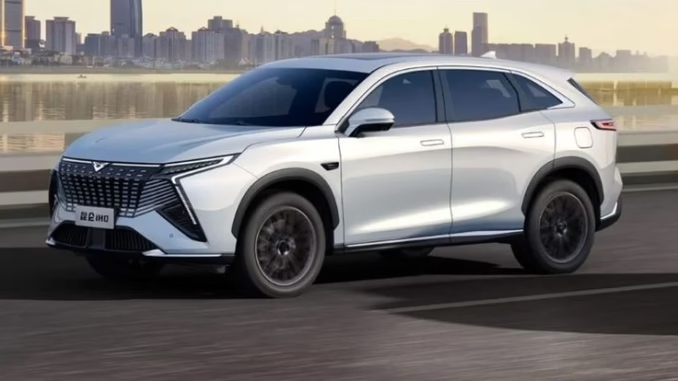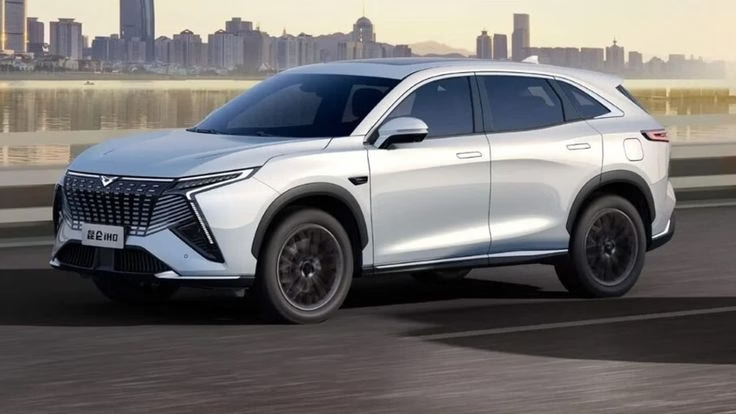
The global automotive landscape is undergoing a seismic shift, and at the forefront of this transformation is China. Once known primarily as a manufacturing hub for traditional vehicles, the country has rapidly evolved into a dominant force in the electric vehicle (EV) industry. From groundbreaking technology to robust government support, China’s leadership in the EV sector is undeniable. Here, we delve into the key factors that have propelled China to the top of the electric car industry.

1. Strong Government Support
One of the primary reasons for China’s success in the EV industry is its proactive and unwavering government support. Over the past decade, the Chinese government has implemented a series of policies and incentives aimed at promoting the adoption of electric vehicles. These include:
- Subsidies and Tax Breaks: Generous subsidies and tax incentives have made EVs more affordable for consumers. Although these subsidies have been gradually reduced in recent years, they played a crucial role in jumpstarting the industry.
- Regulations and Mandates: China has set ambitious targets for reducing carbon emissions and increasing the share of EVs in the overall vehicle market. For example, the New Energy Vehicle (NEV) credit system mandates automakers to produce a certain percentage of EVs.
- Investment in Infrastructure: The government has heavily invested in the development of charging infrastructure, making it easier for consumers to switch to electric cars.
These policies have created a favorable environment for both manufacturers and consumers, fueling rapid growth in the EV sector.
2. Largest Market for Electric Vehicles
China is home to the largest automotive market in the world, and this extends to electric vehicles. In 2023 alone, over 50% of global EV sales occurred in China. This massive market provides a fertile ground for companies to scale production, innovate, and achieve economies of scale.
The high demand for EVs in China can be attributed to several factors:
- Urbanization: Rapid urbanization has led to increased awareness of air pollution, prompting consumers to adopt cleaner transportation options.
- Consumer Preferences: A growing middle class with increasing disposable income is eager to adopt advanced, environmentally friendly technologies.
- Ride-Sharing and Public Transport: The rise of ride-sharing platforms and the electrification of public transportation have further boosted EV adoption.

3. Robust Manufacturing Ecosystem
China’s well-established manufacturing ecosystem gives it a significant advantage in the EV industry. The country has a long history of producing vehicles and automotive components at scale, and this expertise has seamlessly transitioned into the EV sector. Key aspects of this ecosystem include:
- Supply Chain Dominance: China controls a significant portion of the global supply chain for EV batteries, particularly in the mining and processing of critical minerals like lithium, cobalt, and nickel.
- Battery Production: Chinese companies like CATL (Contemporary Amperex Technology Co. Limited) are global leaders in battery technology, supplying batteries not just to domestic automakers but also to international giants like Tesla.
- Cost Efficiency: China’s ability to produce EVs at lower costs without compromising on quality has given its manufacturers a competitive edge.
4. Technological Innovation
Innovation is a cornerstone of China’s dominance in the EV industry. The country has invested heavily in research and development (R&D), enabling its automakers to stay ahead of the curve. Examples of technological advancements include:
- Battery Technology: Chinese companies are leading the way in developing next-generation battery technologies, such as solid-state batteries and lithium iron phosphate (LFP) batteries, which are safer, cheaper, and more durable.
- Autonomous Driving: Companies like BYD, XPeng, and NIO are incorporating advanced driver-assistance systems (ADAS) and autonomous driving capabilities into their EVs.
- Smart Features: Many Chinese EVs come equipped with state-of-the-art smart features, such as AI-powered infotainment systems and over-the-air software updates.
5. Competitive Domestic Automakers
China is home to a plethora of EV manufacturers, ranging from established giants to innovative startups. This competitive landscape has driven rapid advancements and ensured a diverse range of products for consumers. Key players include:
- BYD: A pioneer in the EV industry, BYD has become one of the largest EV manufacturers globally, offering a wide range of vehicles, from passenger cars to buses.
- NIO: Often referred to as the “Tesla of China,” NIO is known for its premium electric SUVs and sedans, as well as its innovative battery-swapping technology.
- XPeng: This startup has made waves with its focus on smart, tech-driven EVs and competitive pricing.
The competition among these automakers has resulted in continuous innovation and price reductions, making EVs more accessible to the average consumer.
6. Strategic Global Partnerships
Chinese automakers and battery manufacturers have established strategic partnerships with international companies, enabling them to expand their global footprint. For instance:
- Tesla’s Gigafactory in Shanghai has become a cornerstone of its global operations, producing vehicles for both domestic and international markets.
- Chinese battery manufacturers supply key components to automakers worldwide, strengthening their position in the global supply chain.
These partnerships not only boost China’s influence in the EV industry but also facilitate knowledge exchange and collaboration.
7. Focus on Sustainability
China’s leadership in the EV industry aligns with its broader commitment to sustainability and carbon neutrality. The country has set a target to achieve peak carbon emissions by 2030 and carbon neutrality by 2060. Promoting electric vehicles is a central component of this strategy.
The transition to EVs is also helping China address pressing environmental issues, such as air pollution in major cities. By reducing reliance on fossil fuels, the country is taking significant steps toward a cleaner and greener future.
Challenges and the Road Ahead
While China’s dominance in the EV industry is impressive, it is not without challenges. These include:
- Overcapacity: The rapid expansion of the EV sector has led to concerns about overproduction and market saturation.
- Competition: As other countries ramp up their EV initiatives, Chinese automakers will face increasing competition in global markets.
- Battery Supply Chain Risks: The reliance on critical minerals poses geopolitical and environmental risks, prompting the need for recycling and alternative materials.
Despite these challenges, China’s strong foundation and commitment to innovation position it well to maintain its leadership in the EV industry. By continuing to invest in technology, infrastructure, and sustainability, the country is poised to shape the future of global transportation.
Conclusion
China’s rise as a leader in the electric car industry is a testament to its strategic vision, robust policies, and relentless focus on innovation. From dominating the supply chain to fostering a competitive ecosystem of automakers, the country has set a benchmark for others to follow. As the world transitions toward cleaner and more sustainable modes of transportation, China’s role will remain pivotal, influencing the industry’s direction for years to come.

Leave a Reply